7.4 Qualitative risk analysis – impact
Defining impact
As with probability, we assign each risk an impact (or effect) score on a scale from one to five.
Once again, one represents a very low impact on the project, and five indicates that it is very high or severe for our project.
An example of the language we might use is:
- Insignificant – 1
- Minor – 2
- Moderate – 3
- Major – 4
- Massive – 5
You can choose any labels or scoring system you like here, as long as it corresponds to your probability scale; in other words, you cannot have a probability score out of five and impact out of 100 if you want your subsequent analysis to work.
Note that you should avoid terms such as ‘catastrophic’ that solely imply a negative impact – remember, we are analyzing opportunities as well as hazards.
Multiple impacts
Unlike probability, impact is a multi-faceted concept.
The same risk might have no impact on the schedule, a minimal impact on the budget, but a very high impact on health and safety.
Therefore, we consider (and therefore need to define) impact across a range of outcomes – examples follow…
Impact on time / cost
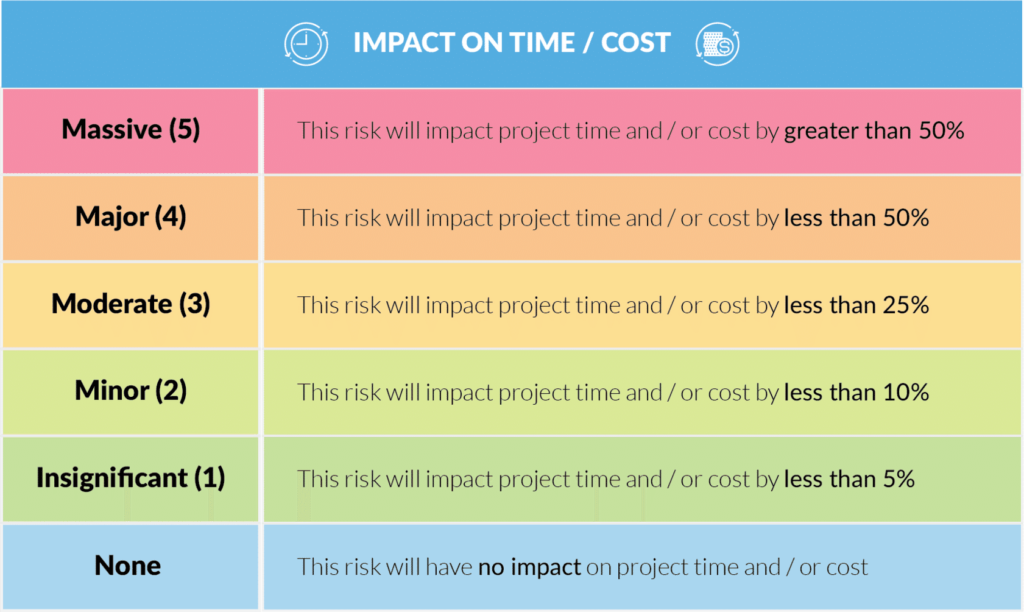
Impact on scope
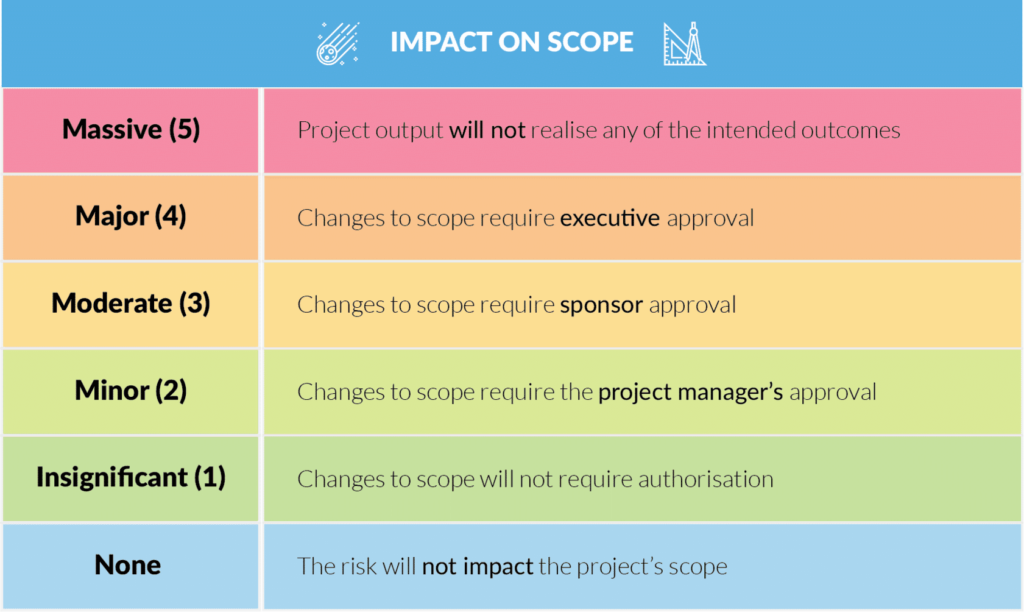
Impact on safety
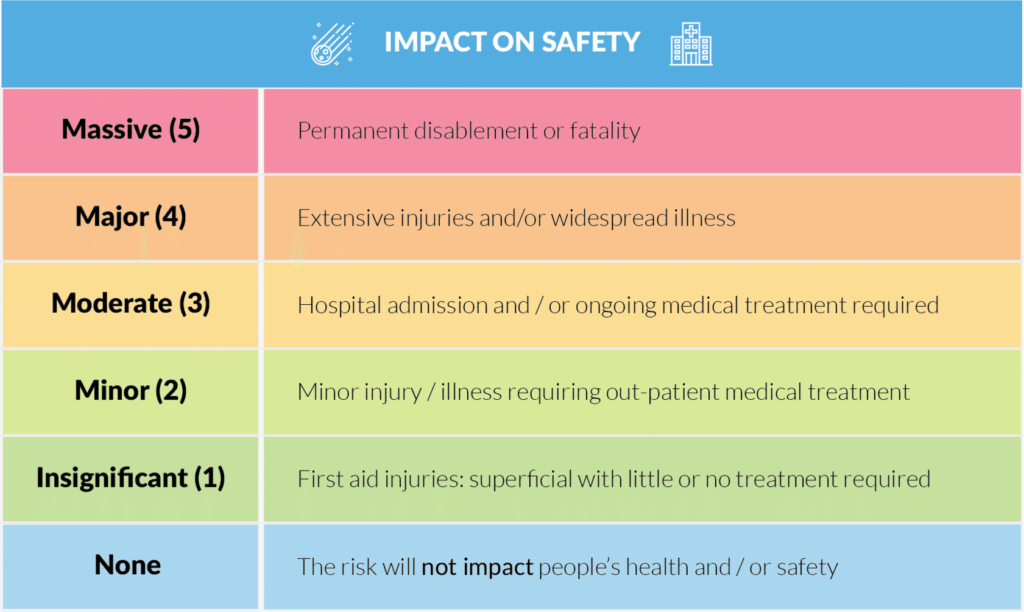
Impact on continuity
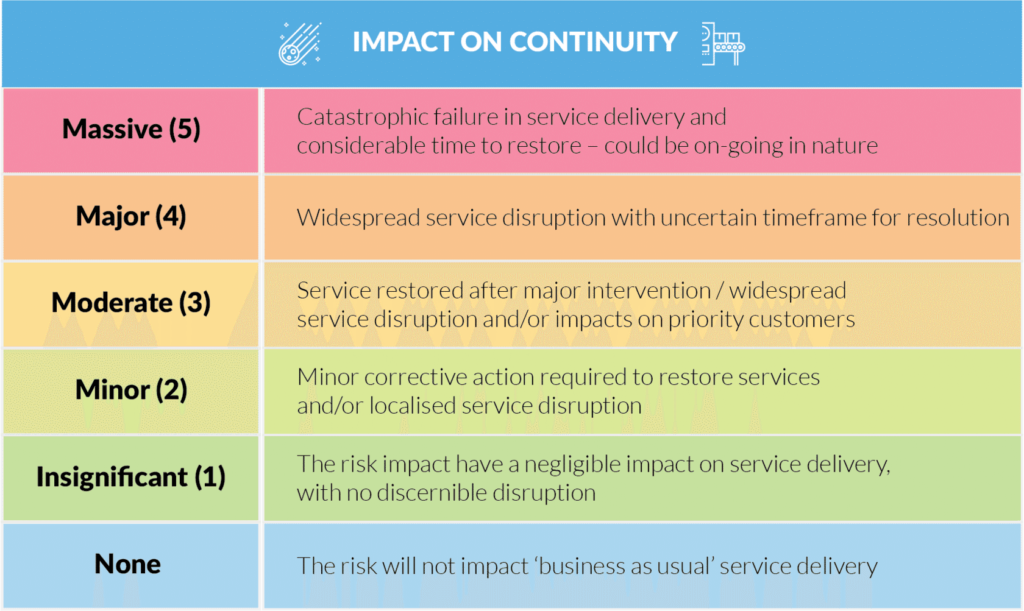
Impact on reputation
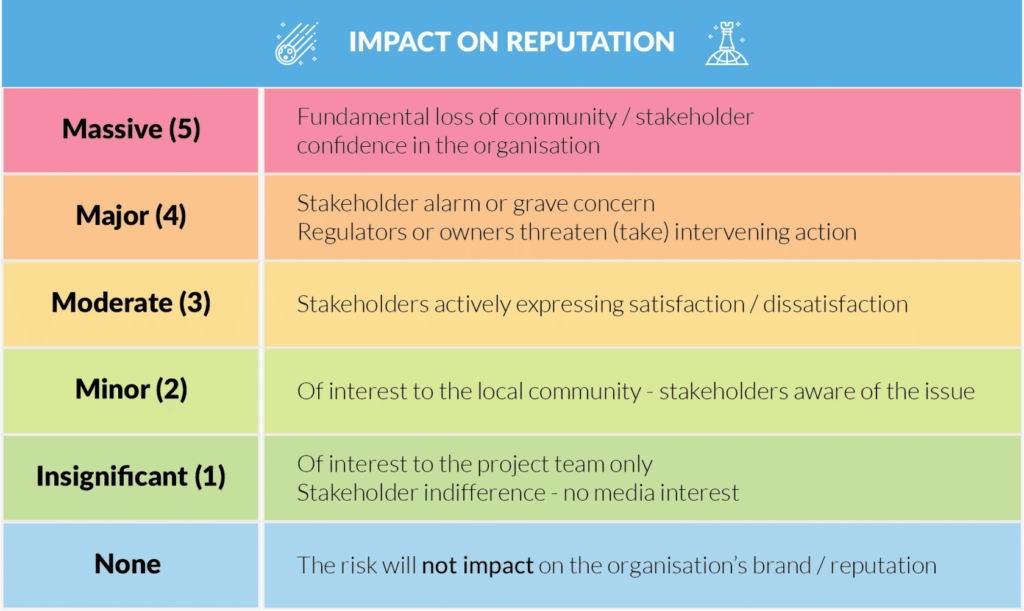
Other impacts
These are just examples – you may need to modify or update the definitions to suit the context of the organizational or project setting.
For example, you will need to better define positive impacts (opportunities).
You might also identify and define other impacts specific to the circumstances of your project and organization.
Putting it into practice
Let’s work through an example…
Our project’s sponsor has suggested that if we use unskilled labor (the cause), we can speed up the construction of our stadium (the risk, or opportunity in this case) to save time and money (the effect).
To that end, we have consulted with stakeholders and analysed the various impacts to arrive at the following risk impact scores:
Note that we have rated opportunities positively and hazards with a negative score.
As our final impact score needs to be on the same scale as our probability score (out of 5, in this case), we can’t just add the scores up to get a result.
Do we, therefore, take the mean, median, mode, or make a three-point estimate?
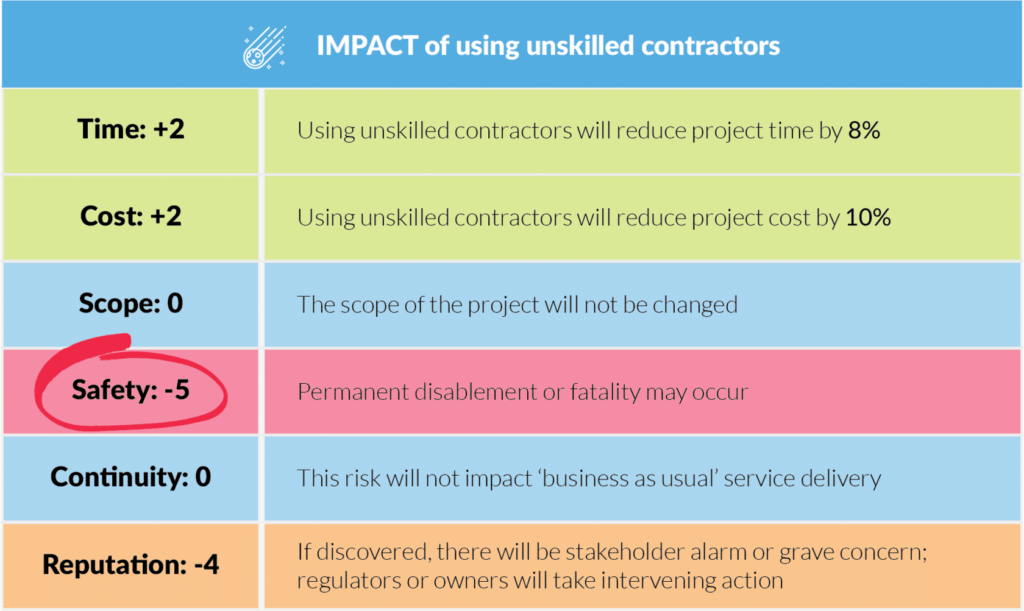
Actually, none of the above – when determining impact, we take the largest score, or (if we are scoring hazards with a negative integer and opportunities with a positive) the score that is the furthest distance from zero.
Therefore in our example, when all impacts are considered, for the purpose of prioritization (which is our next step) the impact score would be negative five (-5).
It is worth noting that because we can often have multiple causes for a single risk, a similar shorthand can be applied to our probability rating, as long as the impacts on the project are likely to be the same in case, regardless of cause.
For example, the risk of someone not showing up to work on the project may be caused by any number of things.
You can see with probability that all scores are expressed as positive numbers.
In this hypothetical example, the probability rating ultimately assigned to the risk of a project team member being absent from duty would be 4 out of 5.
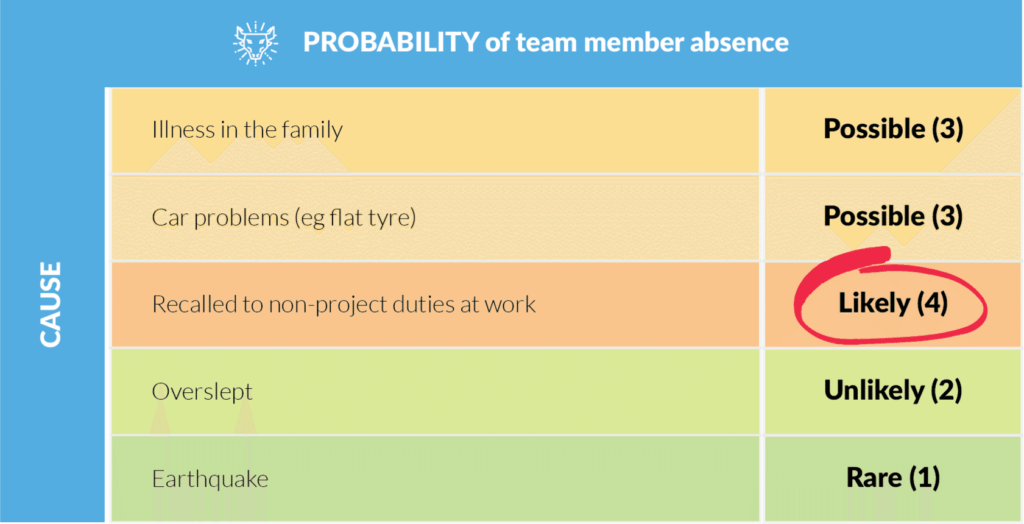
In this example, the impact on the project will be the same no matter the cause; that is, the absent team member will not be able to complete their work.
Note, however, that if different causes of risk will result in different impacts, you should avoid this aggregation.
